9 High Street
9 High Street
The present Lloyds Bank building
9 High Street was built in 1856 but today only the elevation facing the Borough is the original fabric, the interior having been completely rebuilt.
The building, erected for the Wilts & Dorset Bank, replaced earlier poor quality buildings - as Daniel Vickery wrote in 1856 when the bank building opened "Perhaps, however, no part of the borough has undergone more changes in appearance and reality, - dwellings and dwellers - than what is popularly called "The Borough." Not long since the site of Mr Dingley's shop was covered by one of the old wood and plaster buildings, and that of the Wilts and Dorset Bank by a block of low mean dwellings."
|
Yeovilians
remember... |
The Wilts & Dorset Bank was co-founded by wealthy glove manufacturer and Mayor of Yeovil, William Bide. It underwent many mergers during the latter part of the nineteenth century; amalgamating with the Romsey & Hampshire Bank in 1873, taking over the Bridgwater Bank in 1875, amalgamating with Pinckney Brothers Bank of Salisbury in 1897, etc. It became the Wilts & Dorset Banking Co in 1914.
The following edited description is from the Somerset Historic Environment Record -
Bank. Mid-late C19. Ashlar stone, roof hidden behind parapet. 3-storeys of 5-bays, in which 1 and 5 are narrow and set back from the remainder, in a classical commercial style. The ground floor in rusticated work above a plain stone plinth, with some pecked stone: the central doorway (with a modern infilling) and the 2-pairs of windows on either side have semi-circular arched heads in rusticated surrounds, the windows being plain sashes; the doorway has rusticated pilasters, bracket capitals and a segmental pediment: in the side bays, the left-hand has a blind arched panel, the right a door with semi-circular arched fanlight: at first floor level a triple window centrally, the 2-outer plain sashes having arched heads, the middle having a lugged and heeled architrave, the assembly having a hood mould on console brackets, with central pediment; to bays 2 and 4, four-pane sashes in lugged and heeled architraves with flat hood over, and to bay 1 and 5 tall narrow semi-circular arched sashes: to second floor matching flanking windows without hoods to bay 2 and 4, with a plainer triple window centrally. String course to both sill levels, and rusticated quoins to projection; heavy bracketted cornice and shallow parapet.
gallery
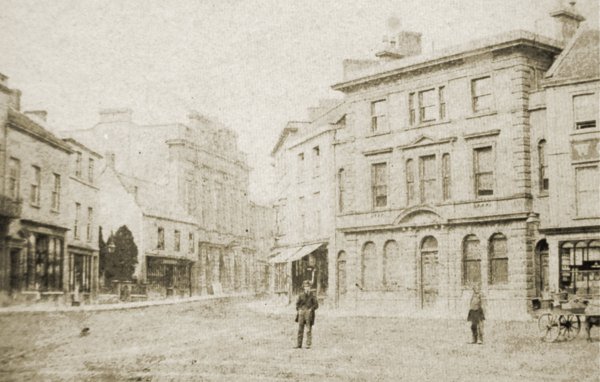
A very early photograph, dating to about 1860, looks across the Borough to High Street. The bank building dominating the right half of the photograph had only been built for a couple of years at this time. At left, the Town Hall lacks a clock tower which was not to be erected until 1864 but taken down in 1887 as unsafe.
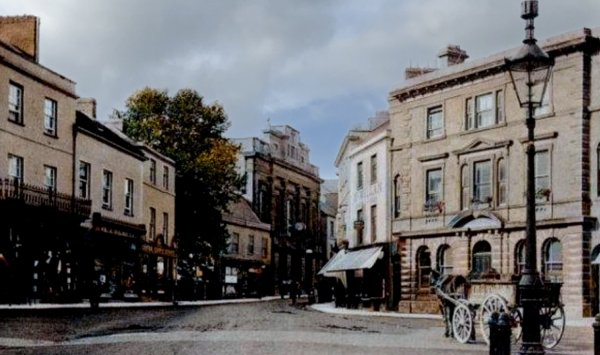
From my
collection
Judging by the size of the tree in the front garden of the Bell, this colourised postcard dates to about 1900.
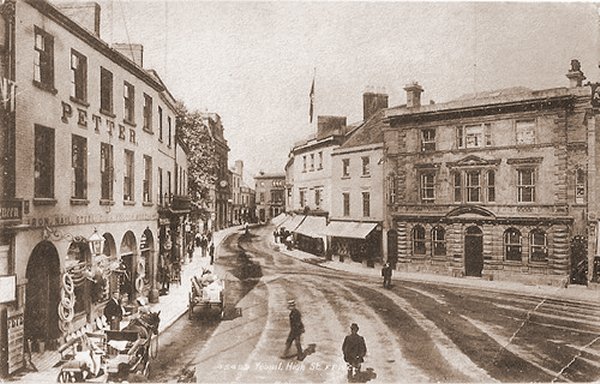
This postcard, dated 1905, looks from the first floor of the Medical Hall along High Street to Stuckey's Bank in Hendford. At left is James Bazeley Petter's ironmongery store - he later opened another branch, just a few doors along in High Street, located between the tree and the Town Hall.
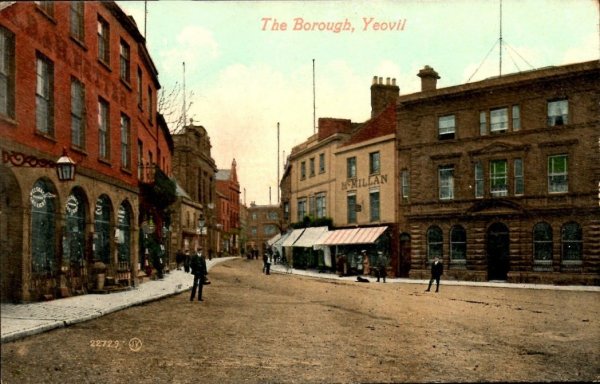
A heavily hand-tinted postcard of the Borough and High Street dating to about 1907.
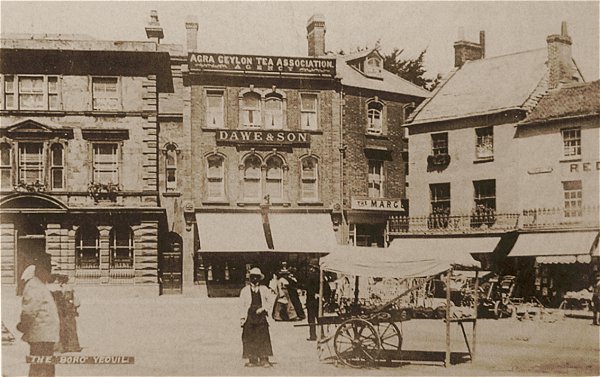
This postcard is dated 1906 and shows the Wilts & Dorset Bank at left, then grocer and tea dealer JH Dawe & Son who were in the Borough from the late 1880s to the 1910s (later Shirley & Somerville) and at right is the clothiers, hatters and outfitters the Redwood Brothers who had three shops and were located in the Borough from around 1890 until the 1930s.
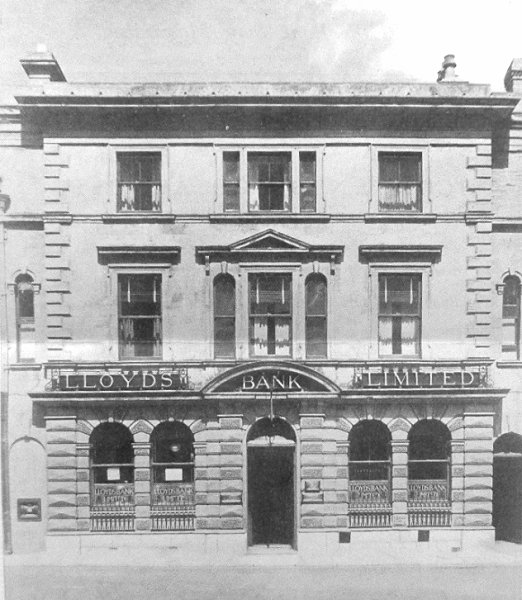
The Lloyds Bank Ltd building photographed by Harold Tilzey in 1936.

This photograph
features in my
book "A-Z
of Yeovil"
Photographed in 2014 - impossible to get a shot without the huge, ugly street light column.